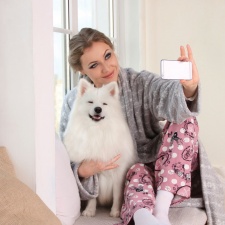“Why in our lifetimes was there a programme called Dogs with Jobs? They used to put it on at 11.30am! I resented a programme called Dogs with Jobs being put on when they knew unemployed people would be watching.”
Russell Brand barked those words long before the insanely profitable pet influencer boom erupted. Today, animal content fetches big bucks - and dogs, cats, pigs, monkeys, you name it, have bigger followings and often better careers than most humans could dream of.
Pet influencers have become so in-demand that specialist agencies have started cropping up throughout the world. Furry-faced social media stars can engage 10 times as many users as human influencers, according to Adweek.
Snort as you may at the thought of dressing a dog in a cardigan for a serious marketing campaign, but when the numbers roll round, brand managers look like cats that got the cream.
The power of paws
What’s the big appeal? It’s as simple as this: animals make people happy. In turn, consumers get a soft spot for brands working with them and are more likely to buy products associated with this feeling of happiness.
Since pets are so well received online, working with a four-legged influencer gives campaigns viral potential. Evoking strong positive emotions makes animal content memorable, ensuring maximum impact.
Take a look at Doug The Pug. His wrinkly chops and pop culture poses have attracted 3.5 million followers to his Instagram account @itsdougthepug alone.
On his journey to stardom, he’s hung out with everyone from Justin Bieber to Ed Sheeran, released a book, and worked with a lengthy list of prestigious brands.
I’m walking on pugshine pic.twitter.com/URFW1WArXC
— Doug The Pug (@itsdougthepug) July 26, 2018
Cute sells, funny sells, and a strong, relatable brand image sells - which is exactly what the lovable pug nails.
Doug’s ‘full-time dog momager’ Leslie Mosier shares her advice for pet influencers in this feature for Time.com. Firstly, create something you’d personally love to follow, then consistently post the type of content your followers love. Keeping it relatable and funny is what’s kept Doug’s popularity from waning.
Dogs for dogs
Pet profiles don’t just have huge amounts of followers, they send engagement rates soaring due to the number of likes, comments and shares.
JetBlue airline reported an increase of 295 per cent on its posts when the brand featured a pet on its social pages. This potential reach isn’t just desirable for commercial gain, it can be used for charitable causes too. Brands are increasingly tapping into the charitable power of influencers and fluffy social media stars are ideal for good-natured campaigns.
Pedigree are a perfect example of this. In March 2018, the dog food brand launched a French campaign Dogs for Dogs, using Insta-famous mutts to help out dogs in shelters.
No media spending was necessary. The company took photos and created stories about homeless dogs as if they were pet influencers, then posted them to the accounts of dogs with thousands of followers such as @bibi_charly (35.5K followers) and @blogofbruce (29K followers).
Likes, likes, and more likes came rolling in, before the news was announced that the dog lapping up their attention was actually in a shelter and could be adopted by clicking one simple link. Traffic to the brand’s ‘Agir pour l’adoption’ page (now 10 years in the running) increased by 62 per cent and 70 per cent of all dogs were adopted. Pawfect.













